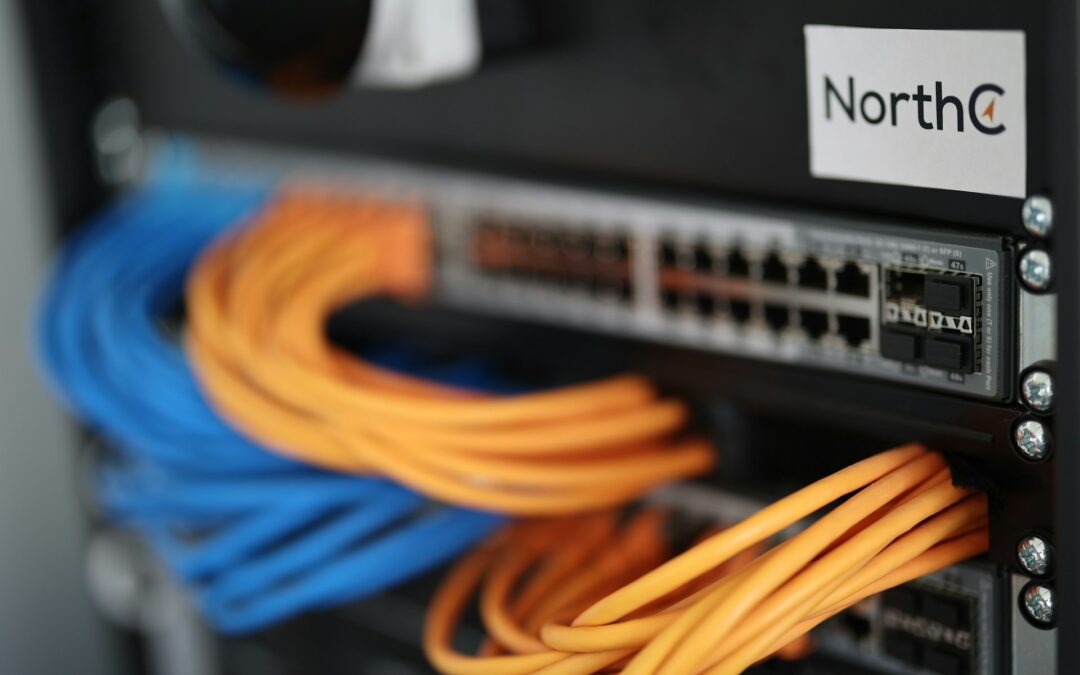Slow network traffic can throw off your entire workday. Pages load late, video calls drop, files take forever to upload, and everything starts to feel stuck in first gear. These little setbacks stack up fast, especially in office settings where time matters. In busy places like Boston and across New England, reliable business networks aren’t just nice to have—they keep day-to-day operations moving. Companies rely heavily on fast, stable connections to support everything from internal communication to customer service.
Streamlining network traffic doesn’t just make things run faster. It makes everything work smoother—from sending emails to processing payments at the point of sale. Understanding how traffic works across your system or where it slows down can help you fix small snags before they grow into big disruptions. That’s where a thought-out approach is a better solution than just guessing what’s wrong or doing quick fixes. Tuning up your setup and getting help when needed keeps your business network sharp and responsive.
Identifying Network Traffic Bottlenecks
Before fixing anything, you need to know where the slowdown is happening. Bottlenecks happen when parts of a network can’t keep up with the amount of data being sent through them. Think of it like traffic backing up on a highway because one lane is shut down. The cars are ready to move, but the road won’t let them through fast enough. Data works the same way.
Some common causes include:
– Overloaded routers or switches that can’t handle the traffic
– Too many devices competing for bandwidth at once
– Old cables or hardware that haven’t been updated in years
– Poor layout or setup that forces data to take long paths
To get to the root of it, start tracking how your current system is working. Pay attention to when connections slow down and check if the same times and tasks keep causing it. That’s usually a sign of a pattern.
There are tools that help test your network’s performance. They check how fast data moves between devices and flag different types of delays. This gives you a clearer view of what’s clogging the system—whether it’s a weak Wi-Fi zone, outdated switches, or problems in how your network is arranged internally.
Let’s say you run a small office in downtown Boston. You’ve got twenty employees all connected at once, most working with shared drives and video conferencing. Mornings get choppy, but afternoons are fine. A review might show your main router slows down during peak times because it’s handling too much. Swapping out gear or re-routing traffic could fix that without major upgrades.
Identifying where the network slows down is step one. It gives you a direction to move forward without guesswork, helping you avoid wasting time or replacing the wrong parts.
Techniques To Improve Network Traffic Flow
Once bottlenecks are found, the next step is fixing them smartly. That doesn’t always mean a full overhaul. Small changes in settings or upgrading a few parts can do the trick.
Here are a few things that can fine-tune the way data flows in your network:
1. Set Up Quality of Service (QoS)
This lets you give priority to certain types of data, like voice or video. So if someone is watching a YouTube video while another person is on a Zoom call, the video chat stays smooth instead of glitchy.
2. Increase Your Bandwidth
If your team has grown or you’re using more data-heavy tools, your current connection might not cut it anymore. Upping your bandwidth gives your network more breathing room.
3. Upgrade Your Hardware
Old hardware can be a hidden issue. Routers, switches, and even cables wear out or lag behind newer tech. Replacing them can remove slow points.
4. Redesign the Layout
If too many devices are grouped in one area or wiring is tangled and long-winded, data can get delayed. Cleaning this up and spreading the load will help traffic move better.
Improving flow means thinking about the network as a full system, not just one wire or one corner. Each part plays a role, and adjusting them to work better together can save you more than just bandwidth. It saves frustration too.
Benefits Of Professional Network Traffic Management
When a business deals with chronic connectivity issues, it’s rarely about a single piece of equipment. It often comes down to how all the different components are working together—or not. The benefit of bringing in professionals is that they take a high-level look. Instead of treating the symptoms, they figure out what’s causing the traffic slowdown across the system.
A skilled technician can save you time by removing the guesswork. They know how to spot hardware that’s no longer keeping up and identify software logs that signal trouble. They test links between workstations and routers and track how your bandwidth behaves throughout the day. It’s hard to do that in-house without the right experience or tools.
In fast-moving places like Boston where tech is tightly tied to daily business flow, the value shows up quickly. One local firm had frequent issues with lag on their inventory software, especially during processing hours. After a full review, it was clear the switches connecting their back office to the server room were overloaded. Adjusting the connections and adding load balancing improved the flow without replacing all the wiring.
You also gain the ability to plan long-term. Tech experts can lay out ways to improve, not just fix, your setup. They help create a strategy based on how your team works—whether that means better coverage on each floor, seamless video conferencing, or staging upgrades to avoid downtime. This forward-thinking approach helps network performance stay strong over time.
Tips For Maintaining Optimal Network Performance
Adjustments help, but keeping things smooth all year requires consistency. Neglect can bring problems back sooner than expected. A well-tuned system still needs attention to stay that way.
Here are steps that help keep things in shape:
– Monitor usage trends. Keep an eye on when slowdowns occur and what software is in use. Pay attention if certain teams or departments always experience issues first.
– Don’t skip firmware and software updates. They often fix bugs and improve reliability.
– Review hardware every year. Network needs grow quietly over time. What worked last year may not be enough this year.
– Document changes. Always track configuration adjustments so they’re easier to understand down the line.
– Back up your network settings. It makes recovery faster if something breaks.
If a system goes untouched for too long, you lose track of small tweaks made over time. That can snowball into confusion when trying to fix something fast. Keeping records and doing low-effort checkups a few times a year saves bigger headaches later.
Also, weather in Boston changes fast. Fall and winter can bring power flickers or heating adjustments in buildings that affect equipment. Schedule seasonal checkups around these shifts to prevent trouble before it starts.
Keeping Your Network Working The Way It Should
A working network isn’t just about faster speeds. It supports employee focus, better client experiences, and fewer surprises during daily tasks. Once you know how traffic works within your setup and where it slows down, you can start improving the pieces that matter most.
Fine-tuning the way your network moves data is worth the effort. By addressing bottlenecks, upgrading what needs help, and building a routine for maintenance, you avoid the disruption that comes with outages or lag during peak times. And having someone with experience guiding the process means you’re much more likely to find a lasting solution.
Whether your office handles small files or relies on fast data for meetings, streamlining your traffic improves day-to-day flow. It helps your team stay productive and your network stay ready to handle business demands without daily hiccups and delays.
Ready to optimize your office setup and enhance productivity? Discover how ASCIO Wireless can assist with all your network needs and support a reliable infrastructure built specifically for Boston businesses. Reach out to us for a detailed consultation and experience seamless operations without the usual connectivity hiccups.

